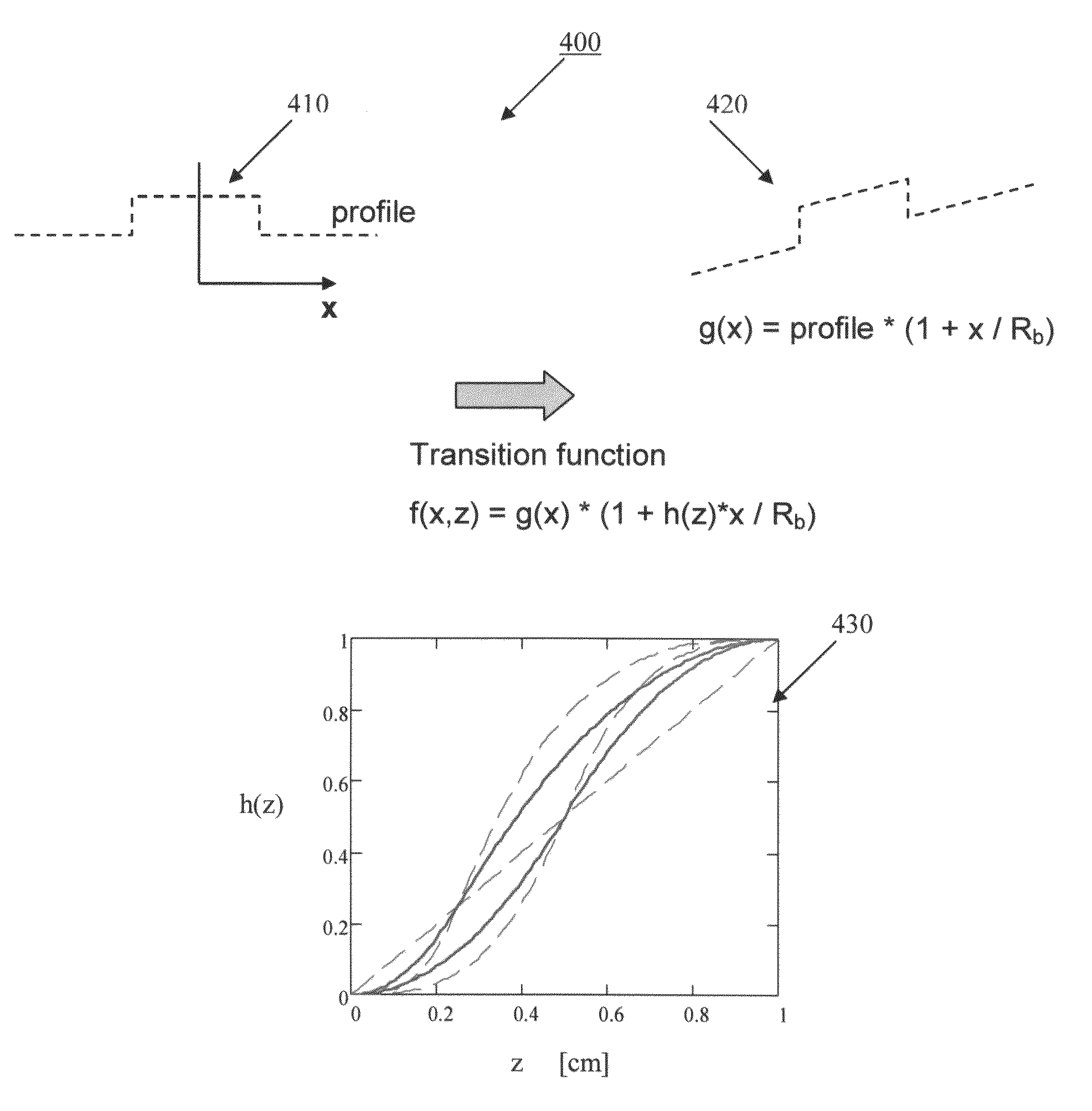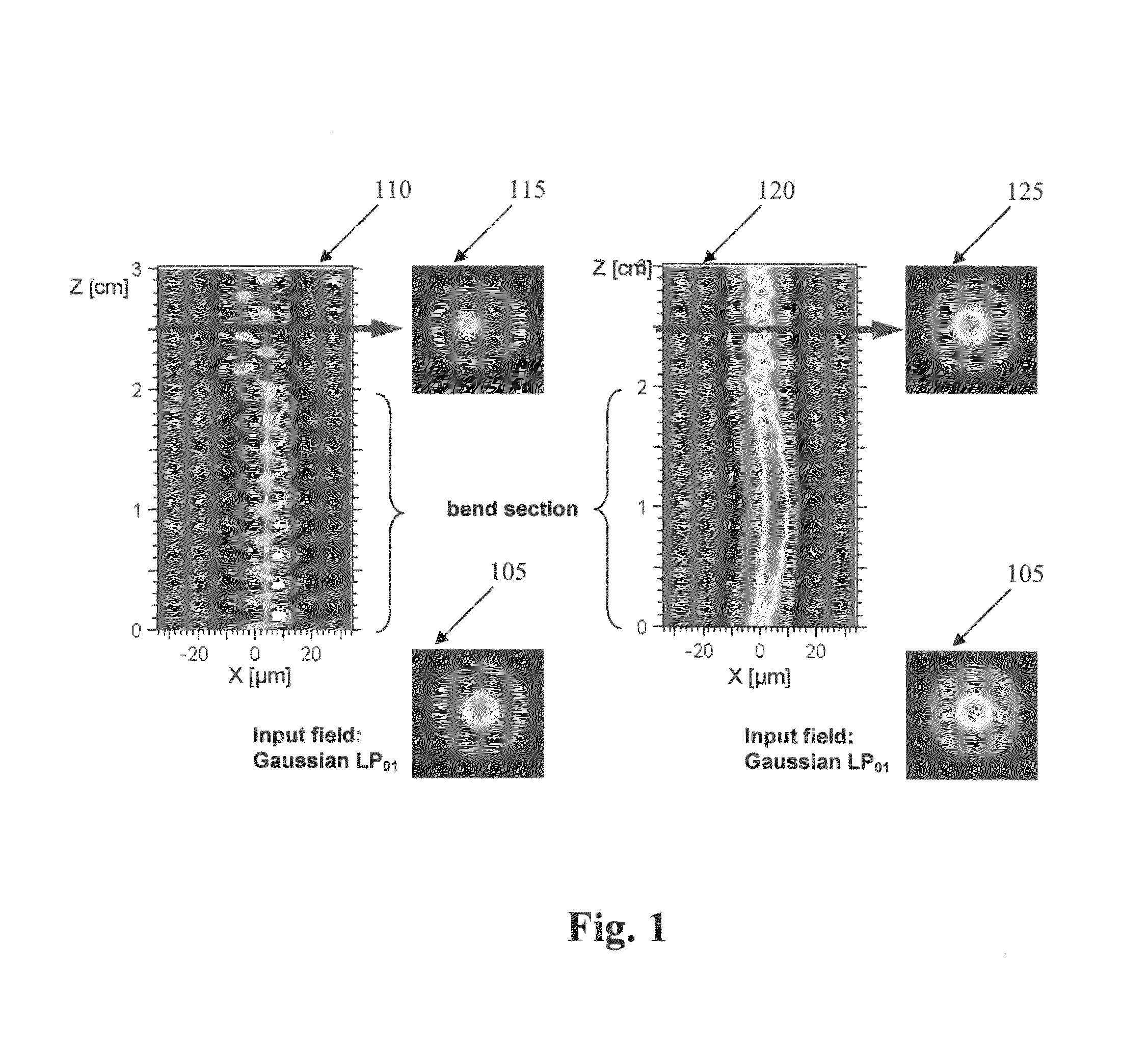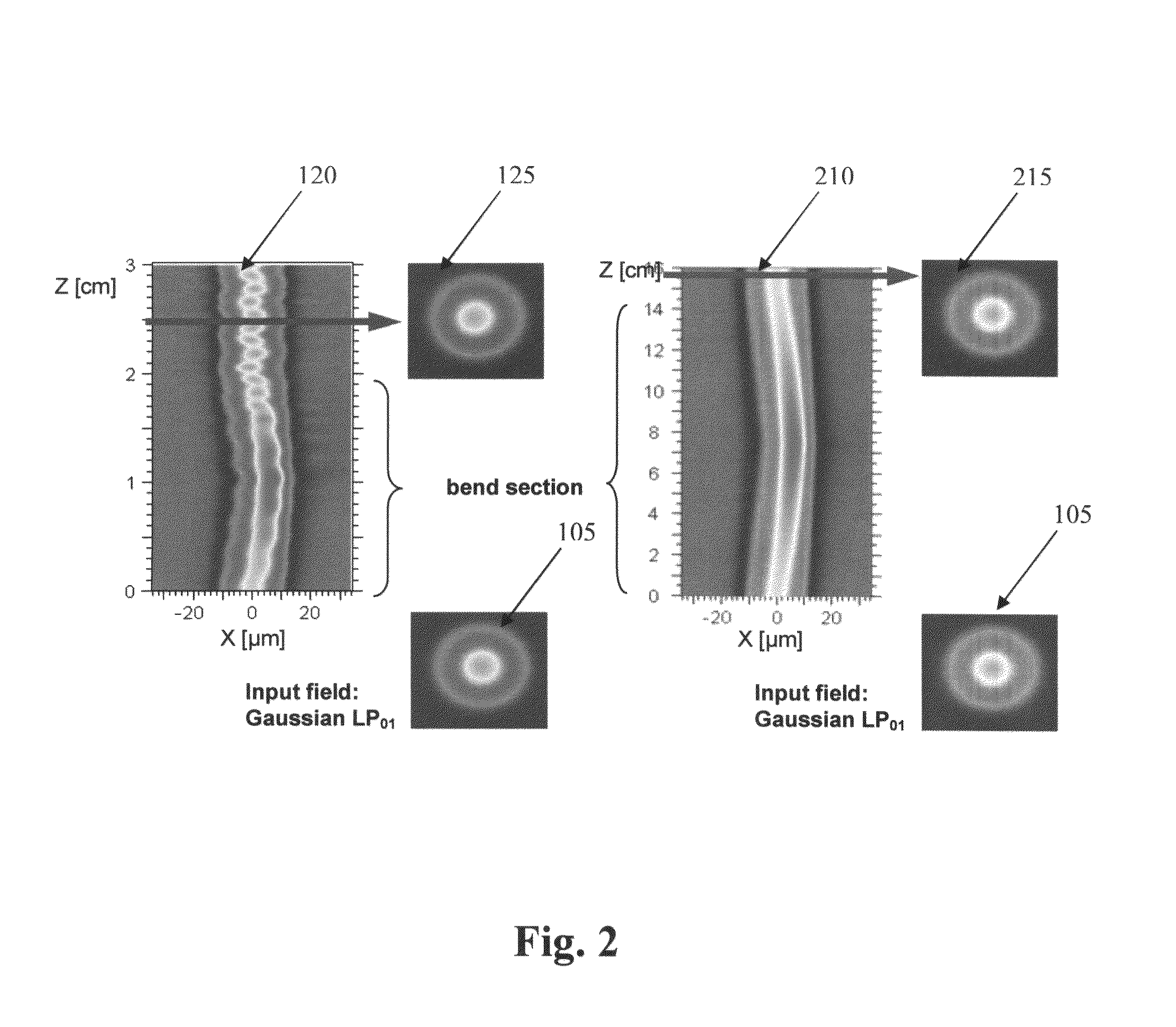Adiabatic bend transitions for multimode fibers
a multi-mode fiber and adiabatic bend technology, applied in the field of fiber optic applications, can solve the problems of limiting the power scaling of fiber amplifiers to higher power levels, reducing the efficiency of high-power fiber amplifiers, and reducing the effective fiber core area to a certain level, so as to reduce modal coupling, improve output beam quality, and reduce the effect of modal coupling
- Summary
- Abstract
- Description
- Claims
- Application Information
AI Technical Summary
Benefits of technology
Problems solved by technology
Method used
Image
Examples
Embodiment Construction
[0033]Further features and advantages of the invention, as well as the structure and operation of various embodiments of the invention, are described in detail below with reference to the accompanying FIGS. 1-12, wherein like reference numerals refer to like elements. The present invention implements guided adiabatic fiber bend transitions to support higher-order mode filtering and / or fundamental mode amplification for passive and active fiber assemblies such as, but not limited to step-index LMA fibers and photonic crystal fibers (also called holey fibers, hole-assisted fibers, microstructure fibers, or microstructured fibers). The fibers themselves may be passive or doped, normal or polarization maintaining, and incorporated into fiber assemblies or amplifiers, which are run in continuous wave or pulsed operation. The invention can be applied to virtually any fiber that guides multiple modes, for which the modal distribution changes by bending the fiber.
[0034]In an embodiment of t...
PUM
 Login to View More
Login to View More Abstract
Description
Claims
Application Information
 Login to View More
Login to View More - R&D
- Intellectual Property
- Life Sciences
- Materials
- Tech Scout
- Unparalleled Data Quality
- Higher Quality Content
- 60% Fewer Hallucinations
Browse by: Latest US Patents, China's latest patents, Technical Efficacy Thesaurus, Application Domain, Technology Topic, Popular Technical Reports.
© 2025 PatSnap. All rights reserved.Legal|Privacy policy|Modern Slavery Act Transparency Statement|Sitemap|About US| Contact US: help@patsnap.com



